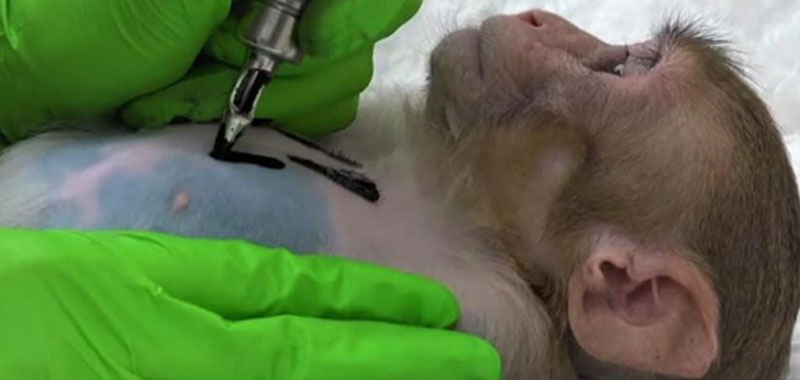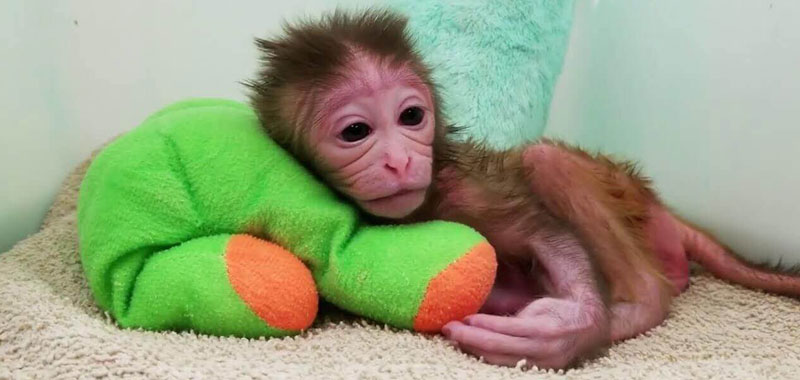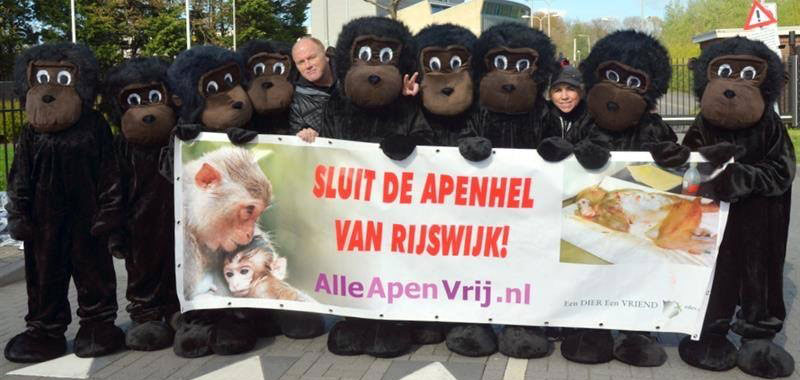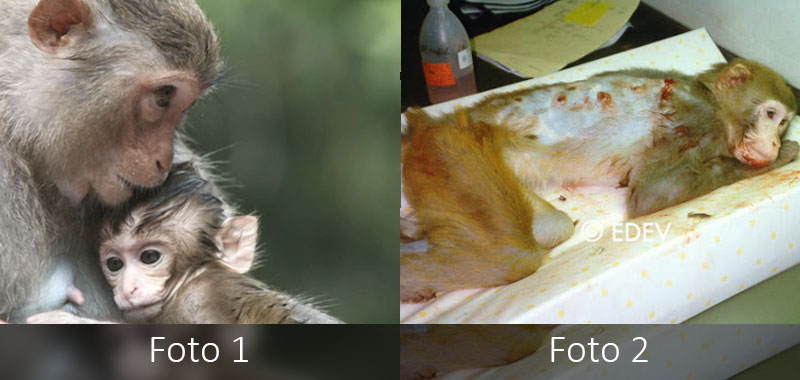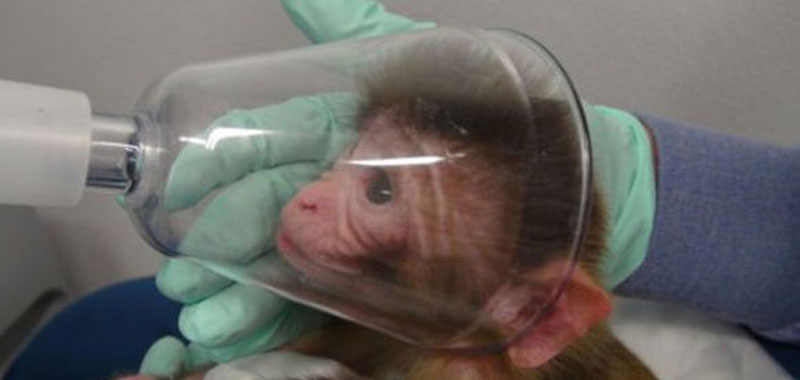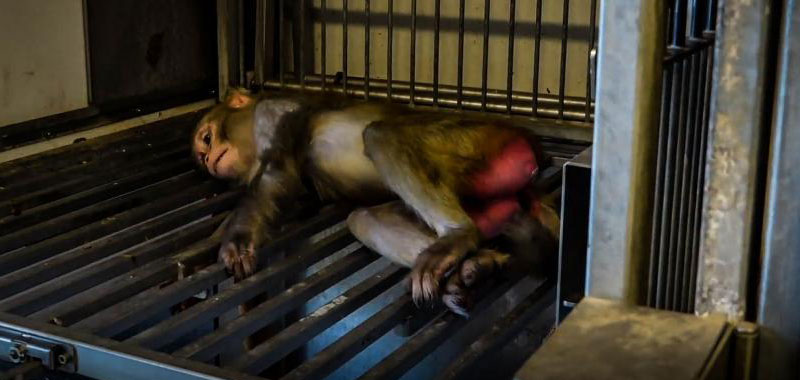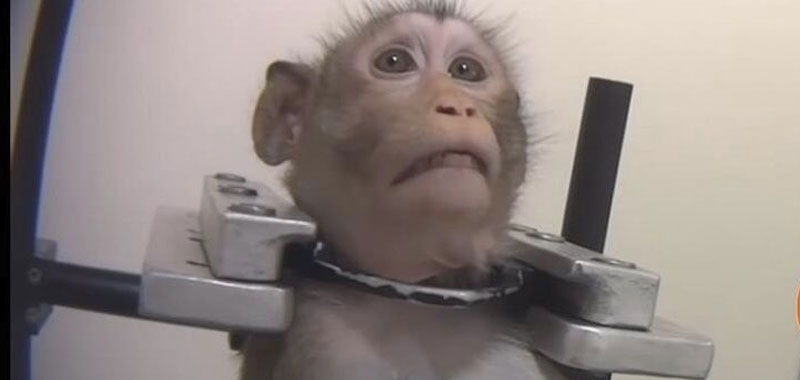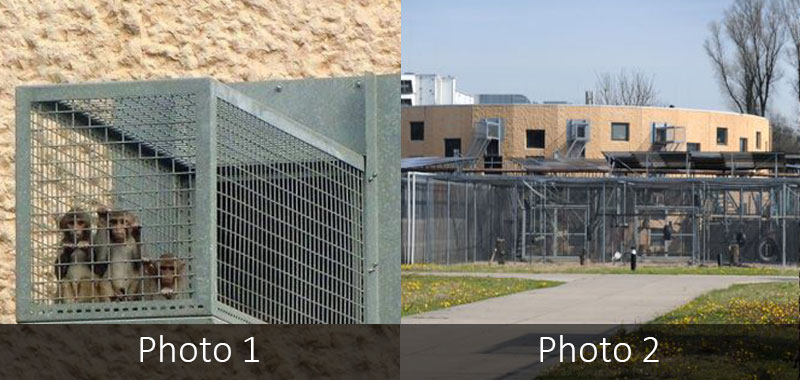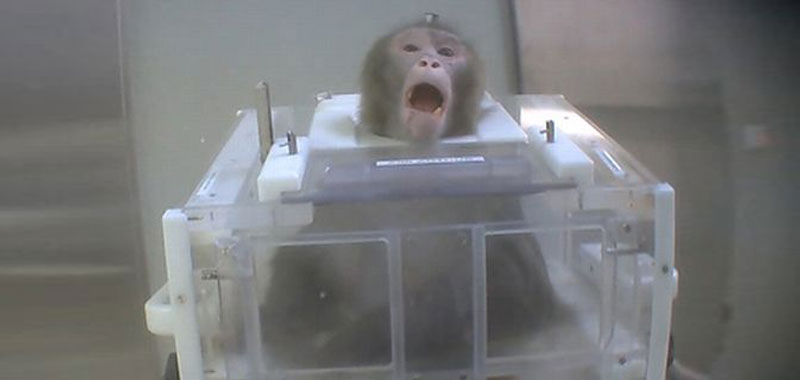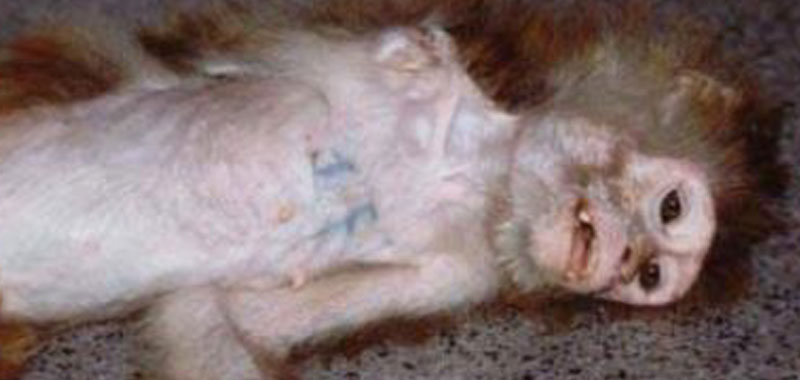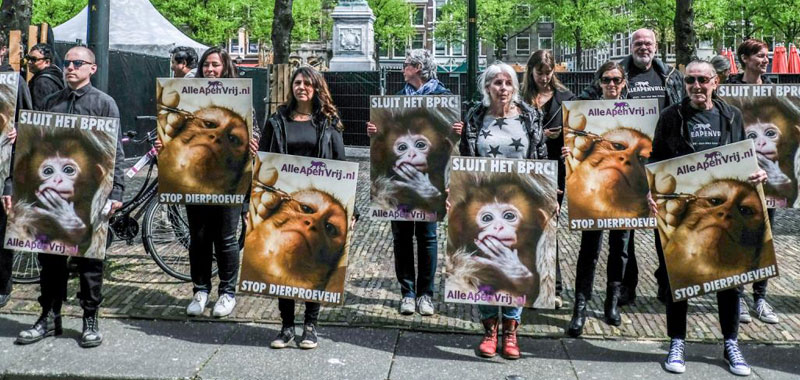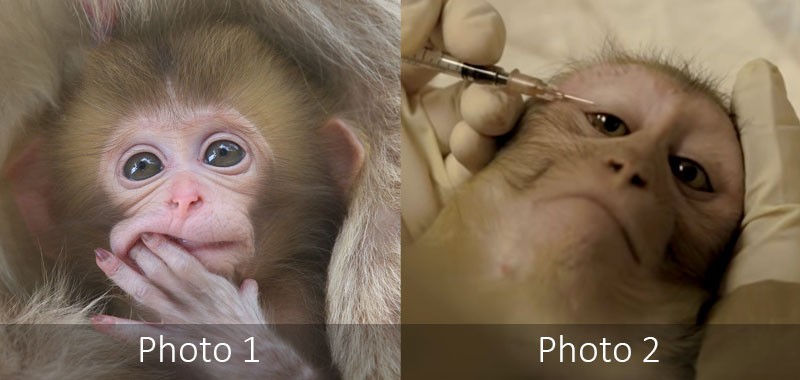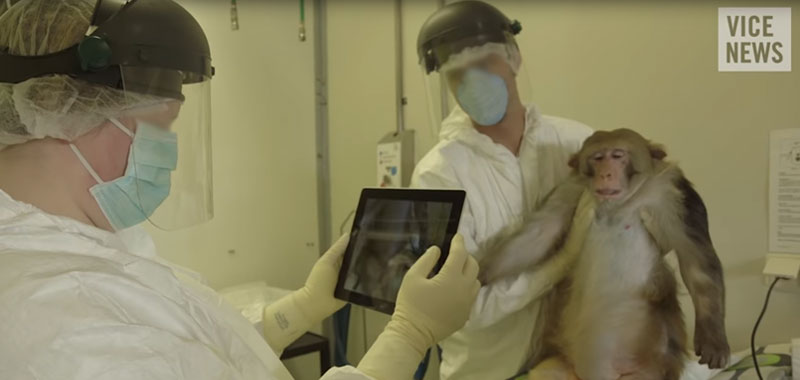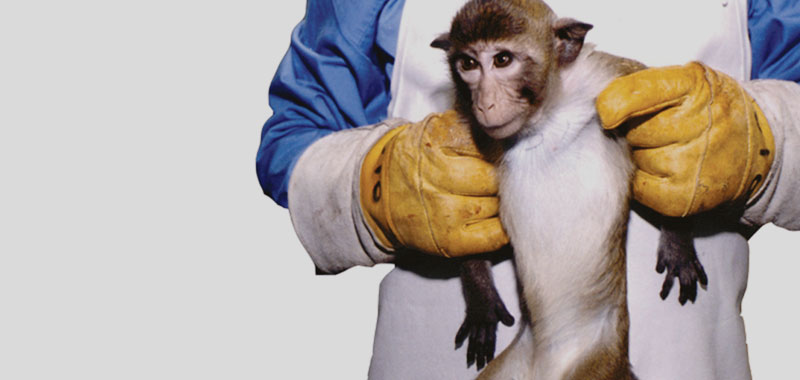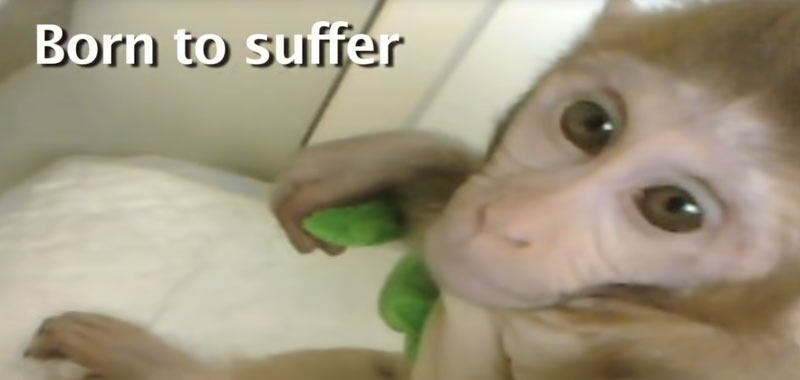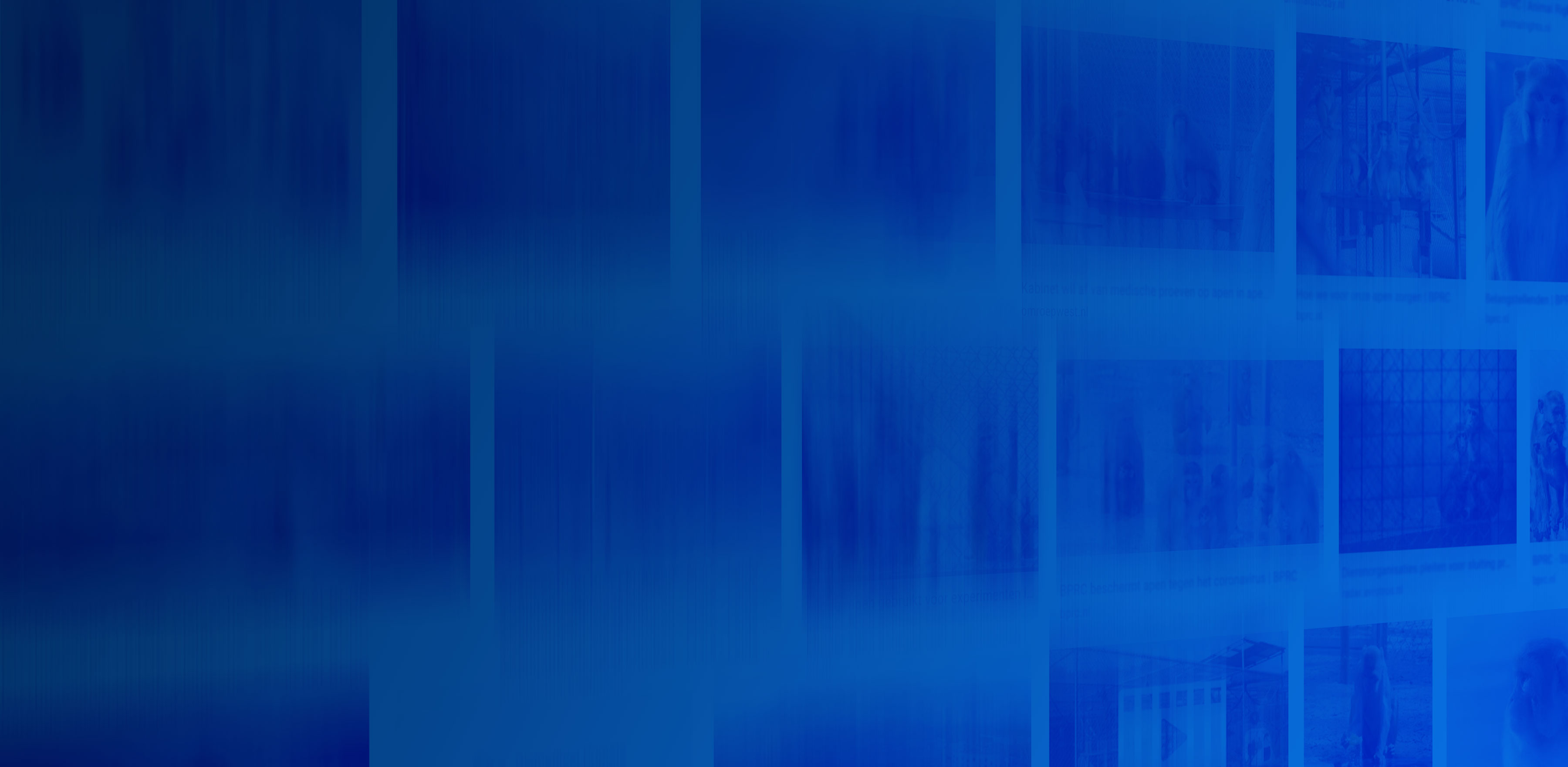
Where the photos and videos come from
Photos and videos of BPRC regularly circulate on the internet. Where do they come from? We figured it out for you.
We would like to warn that there are pictures and videos that are not pleasant to watch. We posted them anyway because we think it is important to provide the correct information about these pictures and videos to get a true picture of what is happening in our facilities.
Part 13: Rhesus monkey gets tattoo
MADE AT BPRC
This photo is a still from one of our videos, about social groups and health checks. The still can be seen at 4:09. You see a monkey getting a tattoo.
Every monkey at BPRC gets a health check every year. It is important that all animals in the colony are and remain healthy. Because they have to be under a light anaesthetic for this, we immediately place a tattoo if they don't already have one. They receive extra pain relief for this. By the way, their eyes remain open and they just keep blinking.
But why a tattoo?
It is a legal requirement to ensure that all animals are identifiable. The chip, which they also receive, can only be scanned close by and unfortunately photos or a necklace with a number plate do not work. That's why we use a tattoo to be able to recognise animals from a distance. The tattoo remains most visible on the chest, because they have little hair there.
Part 11: Activists with banner
PHOTO 1 NOT MADE AT BPRC
Photo 1 comes from a database of free-to-use photos. Among other things, it has been used by a website announcing a film by the biologist David Attenborough.
PHOTO 2 MADE AT BPRC
Photo 2 is from the last century: the date cannot be determined exactly. Previously there was a date on the photo, but it has been removed. This photo was taken at BPRC during a rheumatism experiment. BPRC has not conducted rheumatism experiments for years because there are good treatments available now in the clinic, thanks to monkey experiments. The building where this photo was taken was demolished more than 20 years ago.
Part 9: monkey under anesthesia that has been placed back in the enclosure
MADE AT BPRC
BPRC regularly receives journalists for a look behind the scenes. Activists like to take advantage of that. Likewise by using this picture. It comes from the video of nu.nl at 0:35 sec.
Part 8: fixed monkey
NOT MADE AT BPRC
We would like to warn in advance that this photo is not pleasant to look at.
This photo was not taken at BPRC. After some research we found a video where this photo is a still from. The video was made at Laboratory of Pharmacology and Toxicology (LPT) in Germany.
Part 6: monkey with implant
NOT MADE AT BPRC
We would like to warn you in advance that this picture is unpleasant to look at.
This photo was not taken at BPRC. We do not know of such a fixation system and we do not conduct studies with macaques in which an implant is placed in the skull. The origin of this photo on the internet cannot be traced.
Part 4: photo of commonly used signs during demonstrations with photos of monkeys
PHOTO 1 NOT MADE AT BPRC
Photo 1 is of a young monkey posted on the internet on June 4, 2011 by the Japanese photographer Masashi Mochida. The photo is part of a series about Japanese macaques bathing in the hot springs of the Jigokudani valley in Yamanouchi during the winter. This photo has nothing to do with animal testing. View the original photo here.
PHOTO 2 MADE AT BPRC
Photo 2 is a video still from a documentary about BPRC, made by Vice in 2015. A monkey under light anaesthesia, is injected in the eyelid. It is a Mantoux test. BPRC screens all monkeys (and humans) for tuberculosis every year. For the monkeys this happens during a regular health check, so it is not an animal experiment. In this video we explain how and why we do this (from 3.32).
Part 3: photo of researchers posing with a monkey?
MADE AT BPRC
No, what you see are two animal caretakers involved in dengue virus research.
Dengue virus is transmitted by mosquitoes and is a major medical problem in the (sub) tropics. Rhesus monkeys are susceptible to the virus, which is why they are used in research into vaccines and medicines against dengue virus. In people, a dengue infection can lead to serious complications. One of those complications is blood clotting problems. This can be recognized by subcutaneous petachiae.
What is happening here
The caretakers took a picture to compare the monkey's skin after experimental dengue infection with what the skin looked like before the infection. The monkey was anesthetized.
This is a video still from from a documentary about BPRC, made by Vice in 2015. We recommend watching the entire documentary for the right context.
Part 2: photo of someone with gloves holding a long-tailed macaque
NOT MADE AT BPRC
This photo has been circulating on the internet for years, is widely used and does not come from BPRC.
The photo has been on this website since 2010. At that time, there were no long-tailed macaques at BPRC. Our animal caretakers also wear different work clothes.
Part 1: video born to suffer
MADE AT BPRC
This video was made by a foreign veterinarian, who was our guest. Probably with a hidden camera. Beyond the fact that the methodology used is far from correct, the video in question contains a lot of incorrect information and includes recordings in the context of the health monitoring program of our animals.
The person who filmed with the hidden camera posted a compilation on the internet. Most parts are taken fully out of context. Below is a brief explanation.
Health check breeding colony
BPRC has its own breeding colony in which we house the animals in large social groups under conditions as natural as possible. Once a year, our vets check the health of all animals in the colony. This means that we catch all animals and have them undergo a number of checks under anaesthesia. This is annoying and stressful for the animals and that is why we subject all animals of a group to this procedure on the same day. Sometimes it happens that an animal is injured by one of its kind or gets a prolapse. After the animals have undergone all actions, we put them back in their own enclosure, so that they can wake up in a familiar environment. That is less stressful than having to bring them back to their group after they woke up in a little unknown cage. The animal caretakers who perform these actions sometimes joke or sing along with the radio. And then again continue with their work extremely concentrated.
The video shows a euthanasia of a monkey in the presence of other animals. When we have to euthanise animals as part of an experiment, we always do this in a special room. Unless there is a highly contagious disease, then this is not possible, as was the case in this example.
Our gates are open
These kinds of activities do not prevent us from welcoming everyone with a genuine interest in our work to our premises. And to explain to them why this research is necessary. We also will show them our commitment to animal welfare.


